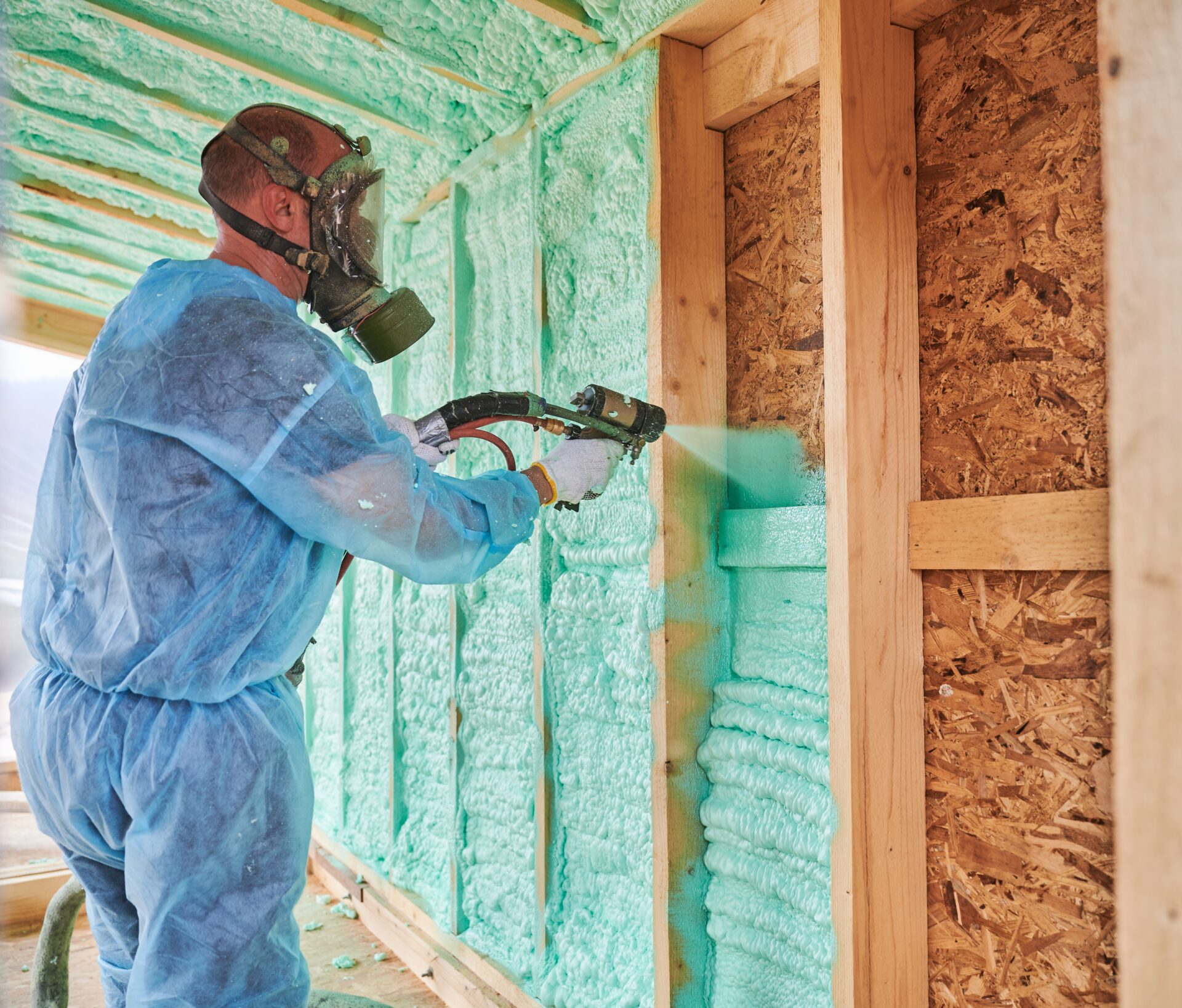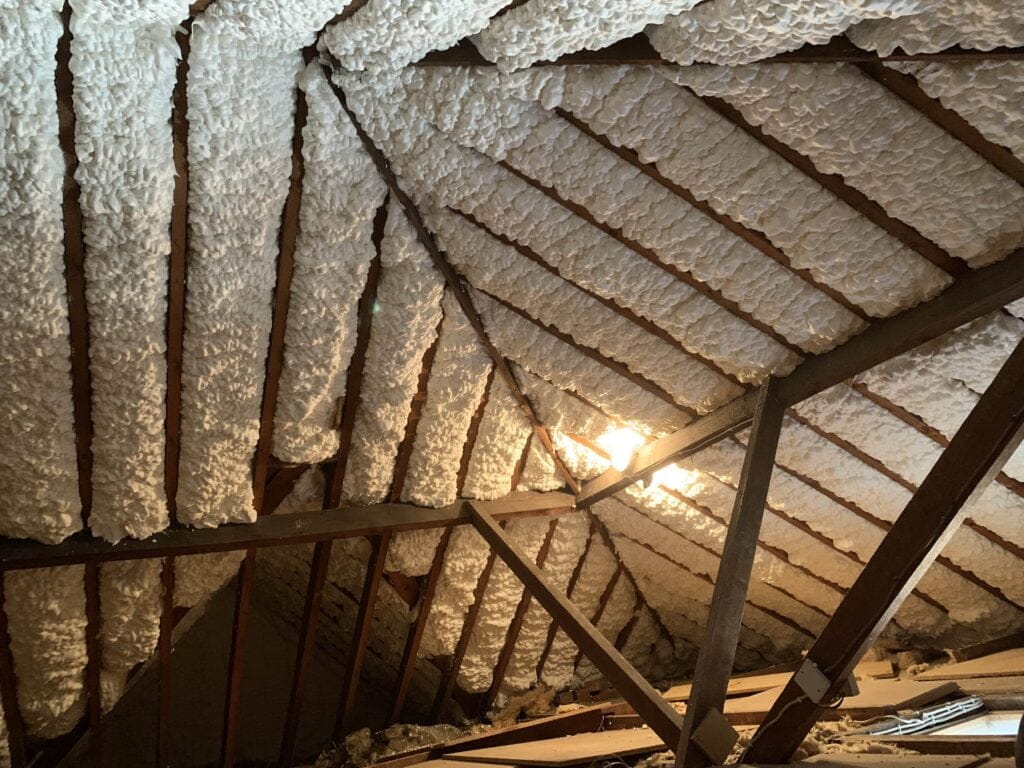The Process of Applying Spray Foam: What You Required to Know
The Process of Applying Spray Foam: What You Required to Know
Blog Article
Spray Foam: The Ultimate Service for Air Sealing and Insulation
Spray foam insulation has actually become a leading solution for reliable air securing and thermal insulation, using a distinct combination of properties that establish it besides conventional methods. Its capability to expand and load voids makes it specifically effective in preventing air leakage, which can substantially impact power effectiveness. Recognizing the full extent of its benefits, setup processes, and contrasts with various other insulation kinds is important for making informed decisions. As we check out these facets, the effects for both brand-new building and constructions and retrofits become significantly significant. What aspects should influence your selection?
What Is Spray Foam?
Spray foam is a functional insulation material that combines the principles of air sealing and thermal resistance to boost power efficiency in structures. Made up primarily of polyurethane or other similar substances, spray foam is applied as a fluid that increases upon call with surfaces, producing a solid, continuous layer of insulation. This distinct building permits it to fill voids, cracks, and gaps that traditional insulation materials might forget, providing an exceptional air seal.
There are 2 major sorts of spray foam: open-cell and closed-cell. Open-cell spray foam is lighter and more adaptable, supplying excellent noise absorption and a lower R-value per inch - Spray Foam. In contrast, closed-cell spray foam is denser, supplying a higher R-value, moisture resistance, and included architectural honesty to building parts
The application process usually includes customized tools, making certain a seamless application that complies with different substratums, including steel, concrete, and timber. This adaptability makes spray foam suitable for both new building and constructions and retrofitting existing structures. Its capability to produce a closed barrier significantly adds to reducing energy consumption and boosting interior air top quality, thus making it a favored option amongst property owners and building contractors alike.
Benefits of Spray Foam Insulation
Among the most substantial advantages of spray foam insulation is its exceptional ability to create a continuous air barrier, which efficiently reduces power loss. Unlike standard insulation materials, spray foam increases to fill up spaces and fractures, guaranteeing that air leakage is dramatically reduced. This particular not only improves energy performance yet likewise causes reduce utility bills with time.
In addition, spray foam insulation gives superior thermal resistance, contributing to a much more secure indoor environment. Its high R-value per inch permits reliable insulation in constrained rooms, making it suitable for attic rooms, wall surfaces, and crawl spaces. In addition, the moisture-resistant homes of spray foam aid avoid mold and mildew and mold development, advertising healthier living problems.
Another important benefit of spray foam insulation is its sound-dampening high qualities (Spray Foam). It efficiently lowers sound transmission in between areas, developing a quieter and a lot more comfy home environment. The resilience of spray foam additionally attracts attention, as it does not sag or work out gradually, maintaining its efficiency throughout its life-span
Just How Spray Foam Functions
Comprehending just how spray foam insulation works is important for appreciating its efficiency in air securing and thermal resistance. Spray foam insulation includes two key elements: isocyanate and polyol material. When visit homepage these parts are combined, they undertake a chemical reaction that triggers the product to expand rapidly, creating a thick foam that loads spaces, cracks, and cavities.
As the foam my response broadens, it sticks to surface areas, creating a closed seal that dramatically decreases air infiltration. This particular makes spray foam insulation very efficient at avoiding drafts and moisture infiltration, which can result in power loss and damage in time. Furthermore, the closed-cell variant of spray foam uses premium thermal resistance as a result of its inflexible framework, properly lessening warmth transfer.
The special properties of spray foam enable it to comply with irregular surface areas, guaranteeing thorough coverage and a smooth barrier. As a result, spray foam insulation not only enhances power effectiveness however also adds to improved interior air high quality by minimizing the build-up of irritants and pollutants. Ultimately, understanding the auto mechanics behind spray foam underscores its role as a superior selection for insulation and air sealing in both residential and business applications.
Setup Process Introduction

Prior to installment, the area needs to be effectively cleaned and prepped, guaranteeing that surfaces are cost-free from particles, dirt, and moisture. Since impurities can endanger bond and general efficiency, this step is essential. When the area is prepared, the application includes blending the 2 elements of the spray foam, which broadens upon contact and loads spaces effectively.
Trained specialists should conduct the installment, using specific equipment to make sure uniform protection and ideal thickness. Security safety measures, including putting on protective equipment and ensuring appropriate ventilation, are critical during this process. After application, the foam typically remedies quickly, creating a solid obstacle that boosts power effectiveness.
Contrasting Spray Foam to Traditional Insulation
When assessing insulation alternatives, spray foam insulation attracts attention in contrast to traditional products such as fiberglass and cellulose. Among the main advantages of spray foam is its remarkable air sealing capacities. Unlike fiberglass and cellulose, which can allow air seepage, spray foam expands upon application, loading gaps and voids to create an airtight seal. This leads to improved power effectiveness, as much less warmed or cooled down air gets away the home, resulting in reduced energy expenses.
Additionally, spray foam gives a higher R-value per inch than traditional insulation types, providing even more reliable thermal resistance in a thinner profile. This characteristic is particularly advantageous in spaces with minimal dental caries deepness. Moreover, spray foam is immune to wetness and mold development, which can be a substantial worry about cellulose and fiberglass, especially in moist atmospheres.
Nevertheless, spray foam insulation usually brings a greater ahead of time expense than its typical equivalents. House owners must evaluate this preliminary financial investment against long-term energy savings and performance benefits. Eventually, while both insulation types offer their function, spray foam emerges as an extra sophisticated remedy his response for modern-day insulation needs, specifically in terms of air sealing and thermal efficiency.

Verdict
In recap, spray foam insulation stands for an extremely efficient solution for accomplishing ideal air sealing and thermal resistance. Its unique residential properties, consisting of dampness resistance and sound dampening, make it ideal for various applications in both new building and constructions and retrofitting jobs (Spray Foam). The first costs may be higher contrasted to conventional insulation materials, the long-lasting benefits, such as significant power cost savings and boosted indoor air high quality, validate the financial investment and underscore its value in modern structure methods.
Spray foam insulation has actually emerged as a leading service for reliable air securing and thermal insulation, supplying an unique mix of buildings that establish it apart from standard techniques.Spray foam is a flexible insulation product that combines the concepts of air sealing and thermal resistance to improve power efficiency in buildings.When reviewing insulation options, spray foam insulation stands out in contrast to typical products such as fiberglass and cellulose. Ultimately, while both insulation kinds serve their objective, spray foam arises as a much more innovative remedy for modern insulation requirements, specifically in terms of air sealing and thermal efficiency.
In recap, spray foam insulation represents a very efficient service for achieving optimum air securing and thermal resistance.
Report this page